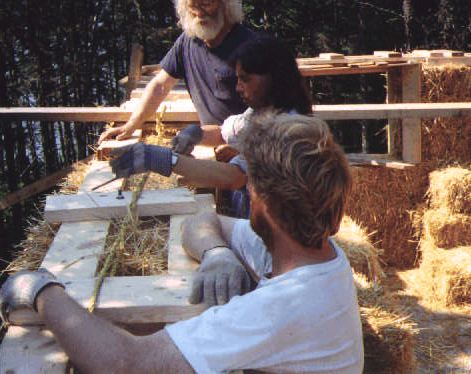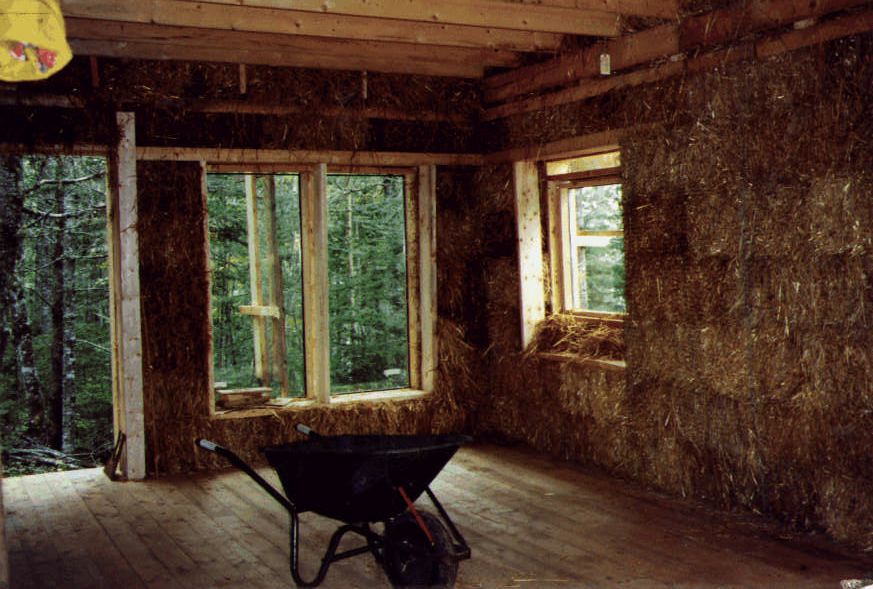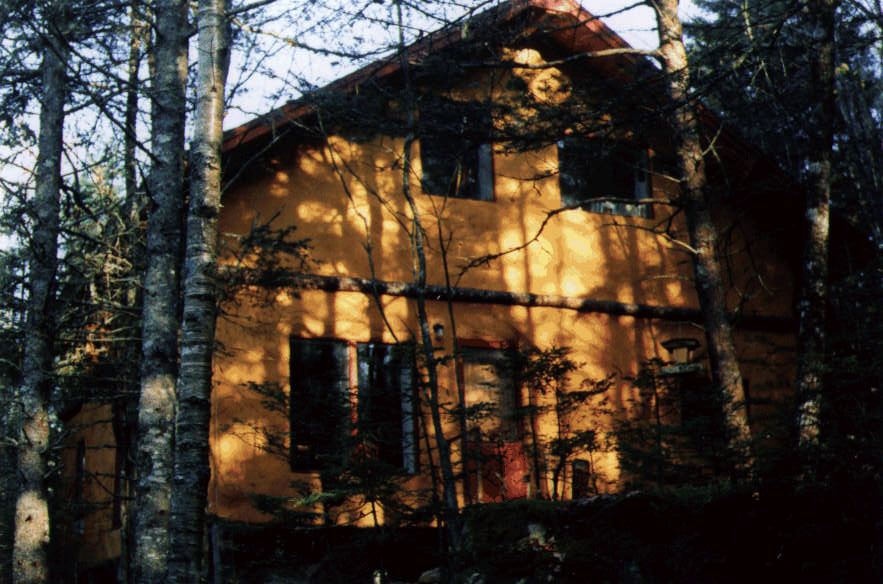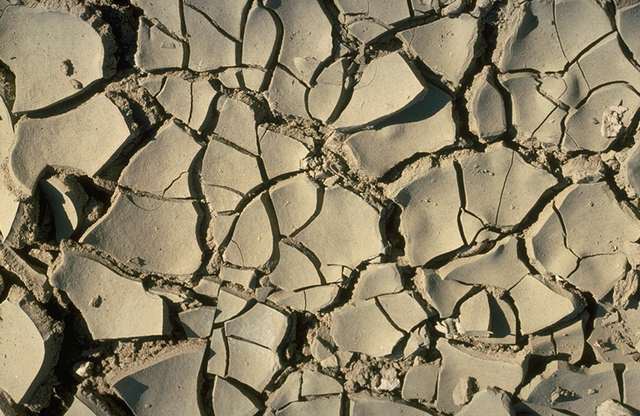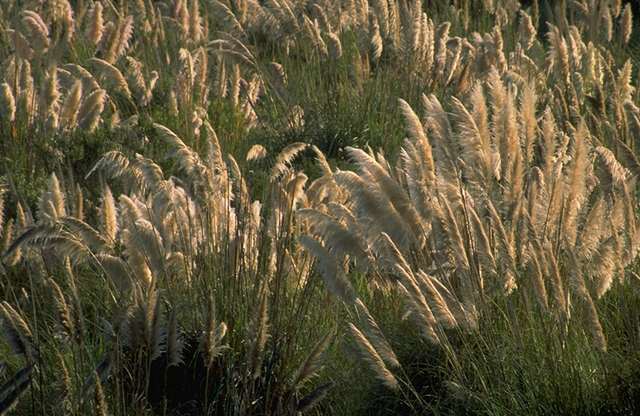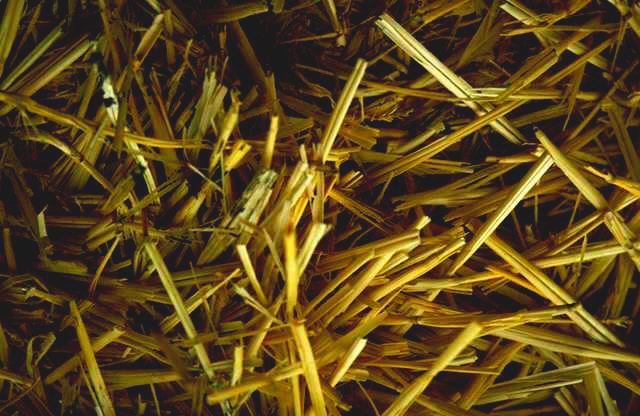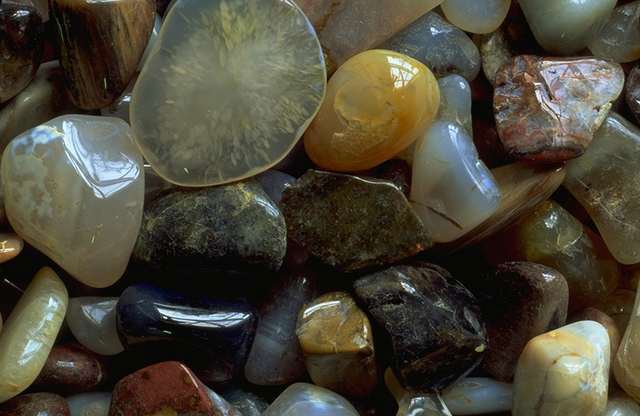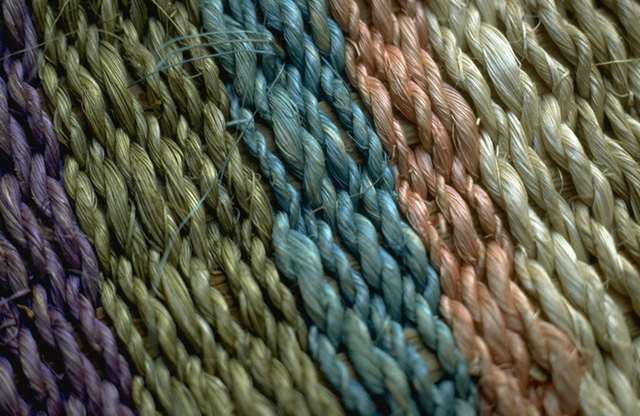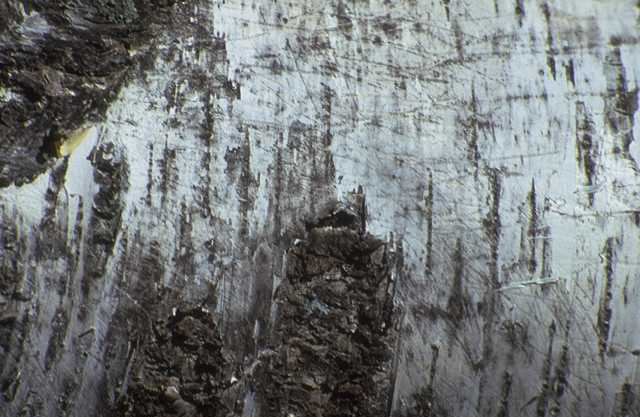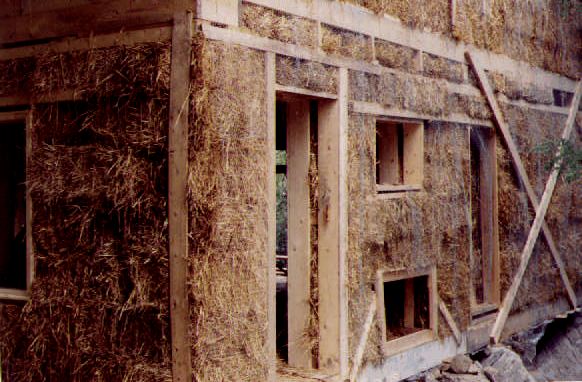 It's been several years now since I first heard about straw bale
construction and since then it has become central to my life. My daughter
and I have just spent the winter in a Nebraska style straw bale home which
we built with many friends and some assistance from the federal and
provincial governments.
It's been several years now since I first heard about straw bale
construction and since then it has become central to my life. My daughter
and I have just spent the winter in a Nebraska style straw bale home which
we built with many friends and some assistance from the federal and
provincial governments.
Its quiet in here as I write, one more gift of the bales.
We built Nebraska style though I was introduced to straw by hearing about buildings in Quebec which use a very different approach. As the idea of straw took hold I began to research what was out there, and of course came to the materials available through Out On Bale, the more I read the more brilliant seemed the Nebraska system, and so it came to pass that in July '93 a group of us armed with Steve McDonald's primer, a lot of common sense, good will, energy and some experience with stud frame construction, built this wonderful shelter.
We built Nebraska style; two stories, 25' x 30' (interior dimension), seven bales high on the main floor and three on the second with an exposed cathedral style roof. The rafters in the roof being 6" x 6" timbers, supported by still barked soft wood trees, which were cut from the property, carrying rigid R20 insulation. The building sits very much in the trees, (much to the chagrin of some working on the project, they always seemed to "be in the way") back from a little road that winds up from the highway, overlooking one of Nova Scotia's myriad lakes, a hour east of Halifax.
The structure rests on old telephone poles, salvaged from a disused power line that cut across the site. They are set into our incredibly rocky ground at least 4 feet deep to avoid frost heave. It would have been preferable to build on slab but given financial constraints and an interest in as little as possible destroying the immediate ecosystem, we decided to work with posts, which in fact allowed us to experiment with putting straw in the floor as insulation between the joists. We laid six millimeter polyethylene on the telephone posts to minimize "rising damp" affecting the bales, then rolled out chicken wire to discourage creatures from taking up residence in such snug quarters.
The joists were set so that they could accommodate a half bale jammed between them, then a tongue and groove spruce floor was laid out on top. Strapping was nailed into the joists from below to provide a grid to keep the bales from slipping through. All of this proved quite labour intensive, especially laying the floor as the straw kept creeping between the joins. This wouldn't be a problem of course if one was laying a second floor on that. A simpler method, if one didn't mind the glues etc. Would be to use plywood and then lay a second floor. The end product, so far, has been fantastic, it's been a very cold winter here and the floor (with out fans or the like) has been consistently warm enough to pad about comfortably in socks or slippers.
The walls have 1/2" threaded iron rods running from the ground floor to the second floor top plate every three feet, as well as being pinned with three foot lengths of sharpened bamboo every two feet. The rods allowed us to torque down the plates as they settled, both the rods and the bamboo gave extra lateral strength. This system worked well providing many jobs for small hands. Wood bracing with lengths of 2" x 6" in an "X" shape were added to each of the walls to provide further lateral stability, these were later parged over.
The straw was covered in chicken wire inside and out, then was stitched with hemp and large needles (forged by our resident straw boss), to the bale walls . Two coats of parging were applied to the inside and three to the outside - the third being a color coat containing ferrous sulphate a mineral supplement for animals which gives a warm yellow ochre color. The parging was again a task for many hands -- many came to help and each brought their own very particular style.
The project began in mid July, we moved in November 24th, work was steady except for a two-week break in August. This is longer than we had anticipated taking but given the chance to do it again we learned much that could expedite the process, this we hope will be communicated through a 23 minute video which was filmed during construction.
From The Last Straw magazine.
